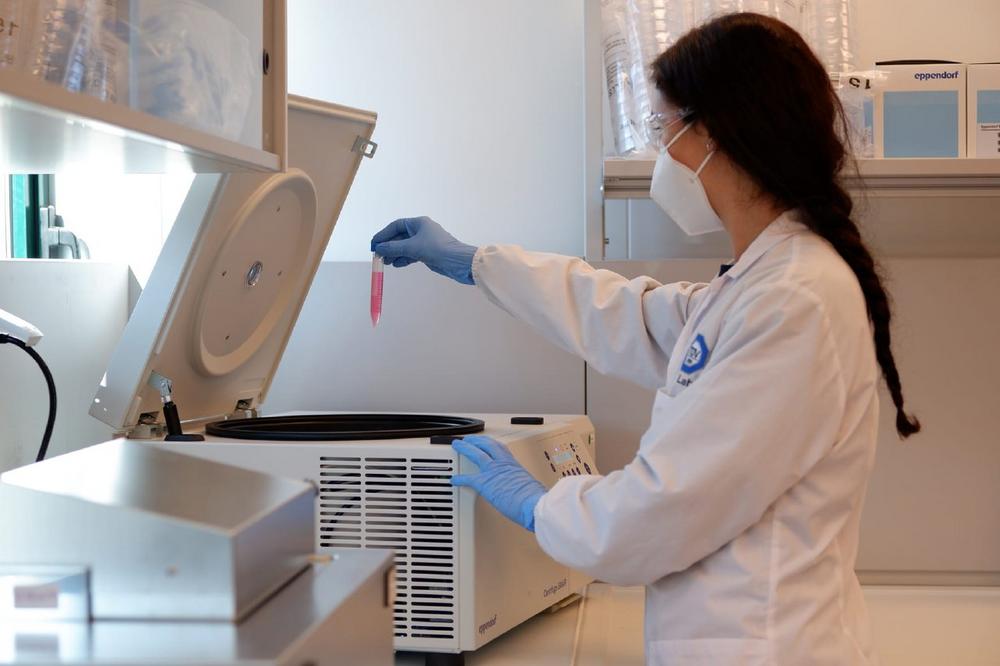Many medical devices come in direct contact with the human body. Other non-invasive devices, such as respirators or dialysis equipment, have indirect contact via the respiratory tract or the circulating blood. Given this, it is important to evaluate the chemicals used in these devices with respect to their potential safety and health risks. “Chemical characterisation concerns virtually all medical devices, from a simple spatula to high-risk products such as implants or pacemakers. Toxicological and biological risk management is designed to ensure that the risks associated with a medical device do not outweigh their benefits”, says Dr Christoph Lindner, medical device biocompatibility expert at TÜV SÜD.
Chemical compounds are constituents of the materials of medical devices, but are also used during processing as auxiliary substances, such as lubricants and cleaning agents or for disinfection and sterilisation. “Ageing and wear may impact on the material characteristics of medical devices, sometimes resulting in the release of chemicals”, warns Dr Lindner. “An exposure to these compounds can cause adverse effects ranging from allergic reactions to serious complications – say, rejection of an implant.”
Instruments used in chemical characterisation
To verify their tolerability, the chemicals used are identified and quantified with the help of chromatography, spectrometry or X-ray diffractometry. By means of these methods, the experts can determine whether the material is chemically pure or whether its use involves potential health, safety or environmental risks. To keep the scope of testing to a necessary minimum, the relevant standards require manufacturers to review all available biological safety data. In vitro testing shall be given preference over in-vivo testing to keep animal experiments to a minimum. Chemical characterisation is completed when the identified residual risk is acceptable or the product is equivalent to an already approved medical device.
At the heart of chemical characterisation: the ISO 10993 series of standards
For the EU market, the general safety and performance requirements (GSPR), including the chemical, physical and biological characteristics, are set forth in the EU Medical Device Regulation (MDR). For the USA, the US approval authority Food and Drug Administrations (FDA) has summarised the requirements in a guidance. According to this guidance, the FDA evaluates the safety of medical devices based on the duration of exposure and nature of contact. For devices where the patientcontacting portions may potentially contain toxic chemicals, the safety assessment must cover both chemical risk and the type and duration of exposure.
There are two fundamental standards for chemical characterisation: The EN ISO 10993-18:2021 – “Chemical characterization of medical device materials” describes analysis of the types and concentrations of volatile, semi-volatile and non-volatile organic and inorganic substances released in the use of the medical device. This chemical profile is used to assess the overall risk that the device poses for patients.
Depending on the product and the results, toxicological risk assessment in accordance with ISO 10993-17 may be necessary in order to establish safe pollutant limits for the extractable and leachable substances.
One-stop testing for the MedTech industry
Chemical characterisation and toxicological risk assessment form part of biocompatibility testing. They must be performed on all medical devices in order to assess their compatibility with biological systems such as the human body. The objective is to protect patients against possible toxic, physiological, immunogenic or mutagenic effects.
The new TÜV SÜD white paper highlights the special features of chemical characterisation and their importance for the safety assessment of a medical device. It also presents specific measures used by manufacturers to ensure the chemical safety of their devices. TÜV SÜD supports companies with all the required biocompatibility tests. Further services include testing of electromagnetic compatibility or radio standards, for example in blood glucose meters.
The white paper can be downloaded from: https://www.tuvsud.com/en-us/resource-centre/whitepapers/chemical-characterization-of-medical-devices
Additional information about the services of TÜV SÜD at: https://www.tuvsud.com/…
Founded in 1866 as a steam boiler inspection association, the TÜV SÜD Group has evolved into a global enterprise. More than 25,000 employees work at over 1.000 locations in about 50 countries to continually improve technology, systems and expertise. They contribute significantly to making technical innovations such as Industry 4.0, autonomous driving and renewable energy safe and reliable. www.tuvsud.com
TÜV SÜD AG
Westendstraße 199
80686 München
Telefon: +49 (89) 5791-0
Telefax: +49 (89) 5791-1551
http://www.tuvsud.com/de
Unternehmenskommunikation / Corporate Communications
Telefon: +49 (89) 5791-1592
Fax: +49 (89) 5791-2269
E-Mail: Dirk.Moser-Delarami@tuev-sued.de
![]()

